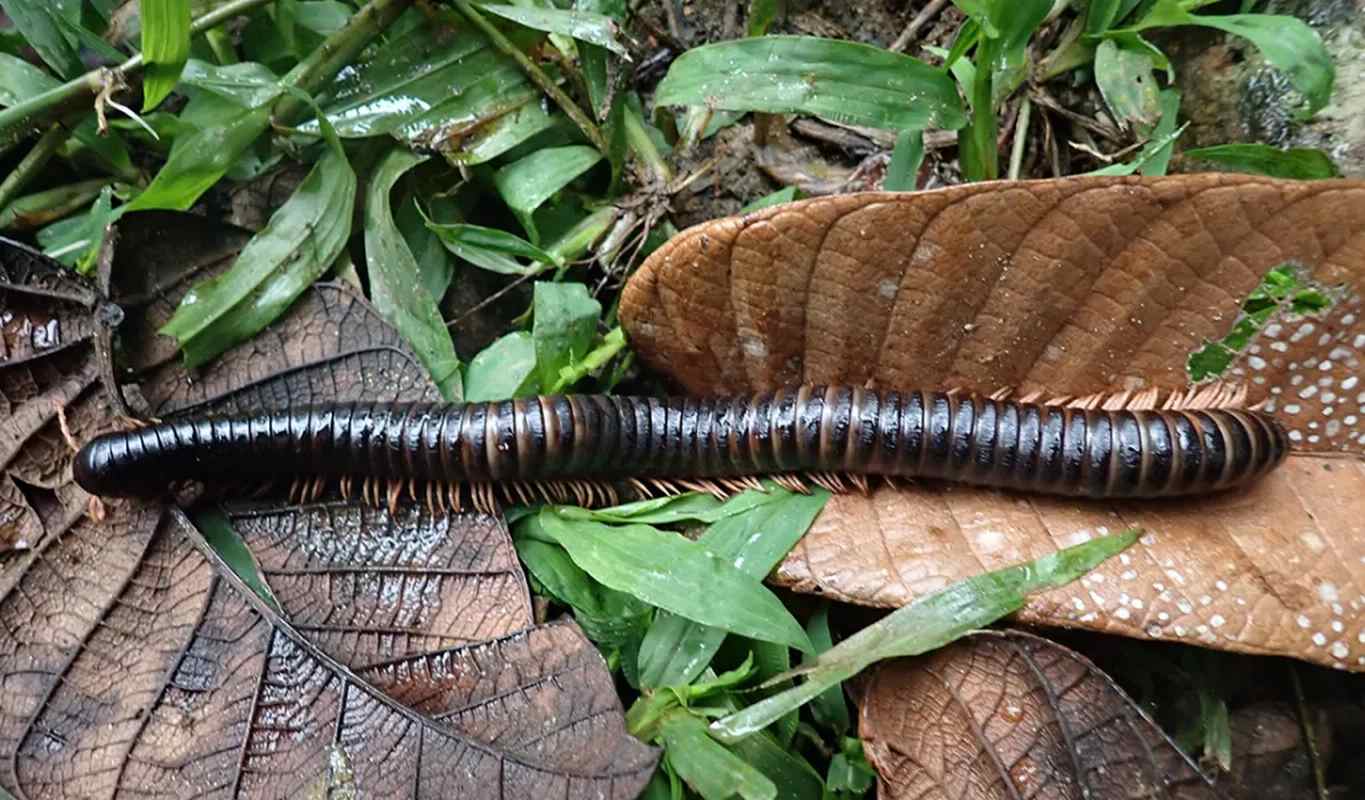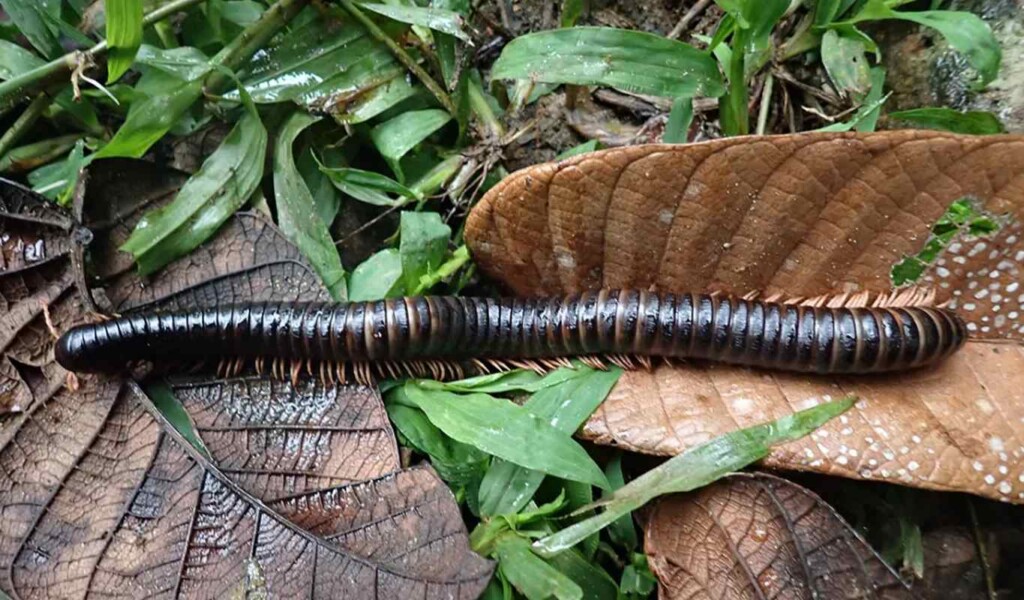
It may be the very definition of a creepy crawly, but this species of giant millipede was a major discovery for a recent scientific expedition to Madagascar.
Not seen in 126 years, it was part of a bevy of species identified by scientists among the trees and waterfalls in a remote section of the largest forest on the island, called Makira.
The expedition was part of Re:wild’s Search for Lost Species program, on the progress of which GNN has reported substantially over the last four years. It included teams of scientists and conservationists from 4 different organizations, as well as local guides.
Different specialized team members were searching for mammals, fish, birds, reptiles, amphibians, and invertebrates that have not had a documented sighting in at least a decade or more, but are not assessed as extinct by the IUCN Red List of Threatened Species. The full team, which numbered more than 30 people, searched Makira for several weeks in September 2023 and spent several months analyzing their results.
“In the past the Search for Lost Species has primarily looked for one or two species on each expedition, but there are now 4,300 species that we know of around the world that have not been documented in a decade or more,” said Christina Biggs, lost species officer for Re:wild, whose eDNA work during the expedition detected 37 additional vertebrate species that the taxonomic experts didn’t sight.
“Madagascar is a biodiversity hotspot and Makira is an underexplored area within the country, so we decided to pilot a new model for lost species searches there. We convened a group of scientists to search for as many species as possible, and it proved successful.”
The expedition team initially had a list of 30 lost species they were hoping to find in Makira. The species on the list included 3 mammals, 3 fish, 7 reptiles, 12 insects, and 5 spiders. With the help of local guides and fishermen, the team found the 3 fish species on the list highlighted by the Makira rainbow fish, not seen in 20 years.
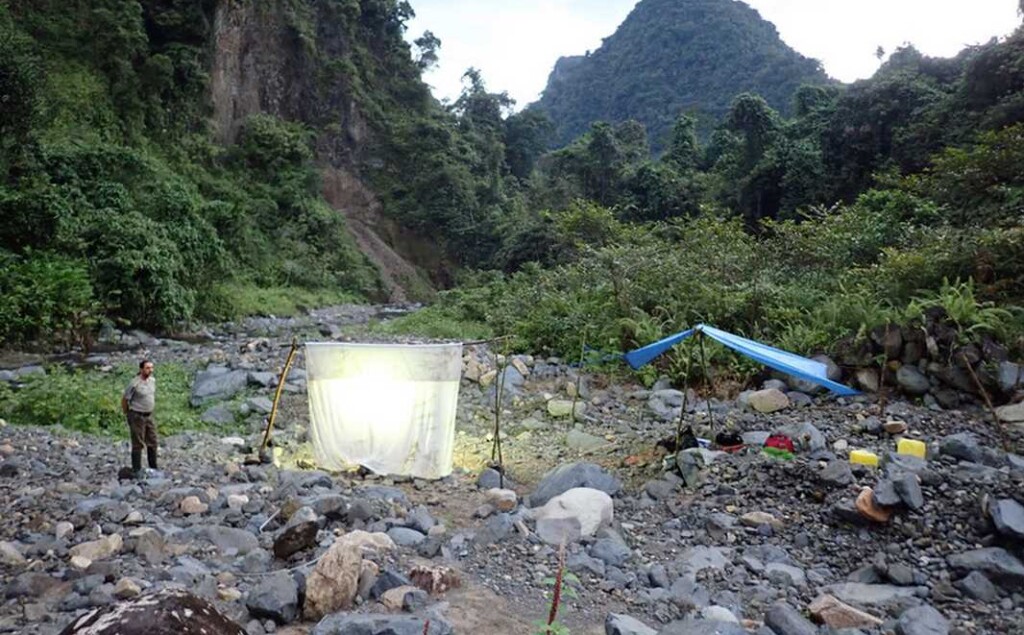
“When we didn’t find anything during the first five days of the expedition it was very frustrating,” said Tsilavina Ravelomanana, fish biologist at Antananarivo University, who had been to Makira 20 years earlier to survey freshwater fish. “We sampled a small tributary of the Antainambalana River, then the main river, then upstream, and then downstream, but we still didn’t find any fish.”
Two of the expedition’s local guides, Melixon and Edmé, hiked around a steep waterfall and over mountains to villages that were within a few days’ walk of the expedition’s base camp along the Antainambalana River. After several days, the guides were able to find a Makira rainbow fish, a common fish to local communities, and brought it back to the camp in a bucket of water.
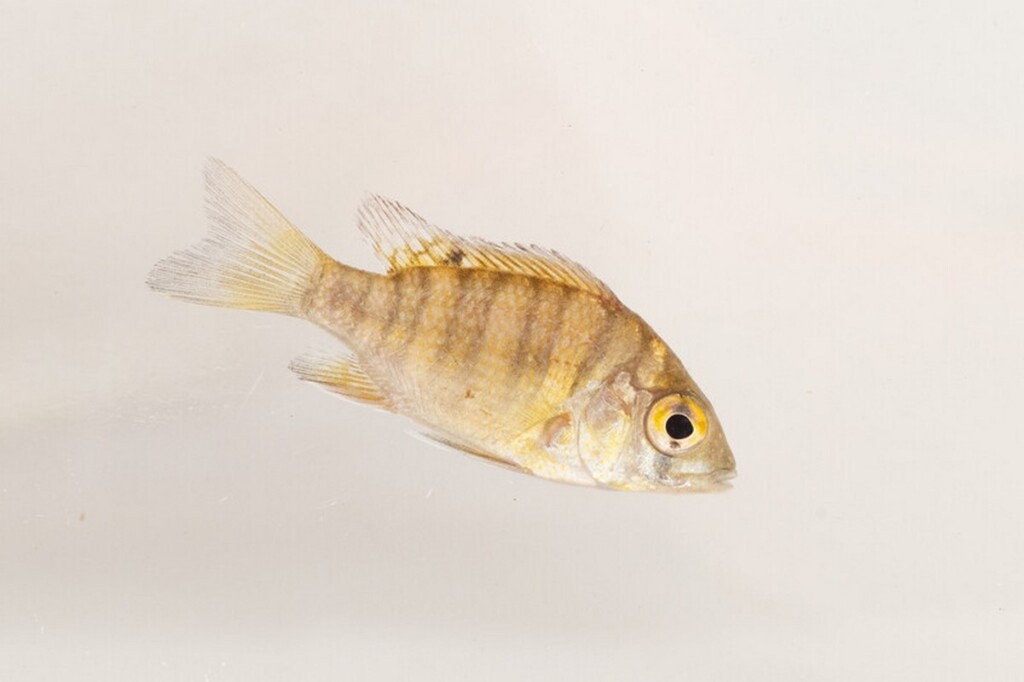
The semi-translucent fish is only a few inches long. The guides were also able to find Ptychoromis makira, which biologists think may only live in one small area near Andaparaty, and is a rare species—even to local communities.
Makira proved to be home to several lost species of insects including bugs and some that were not even on the initial list of lost species for the area. Entomologists found two different species of ant-like flower beetles that had been lost to science since 1958. However, the most unexpected rediscovered lost species was a giant, dark brown millipede.
A SIMILAR EXPEDITION TO CHILE: Mushroom Enthusiasts Help Find Species Lost to Science–Rescuing it from Nature’s ‘Top 25 Most Wanted’ List
“I personally was most surprised and pleased by the fact that the giant millipede Spirostreptus sculptus, not uncommon in Makira Forest, appeared to be another lost species known only from the type specimen described in 1897,” said Dmitry Telnov, an entomologist on the expedition team. “The longest specimen of this species we observed in Makira was a really gigantic female measuring 27.5 centimeters [10.8 inches] long.”
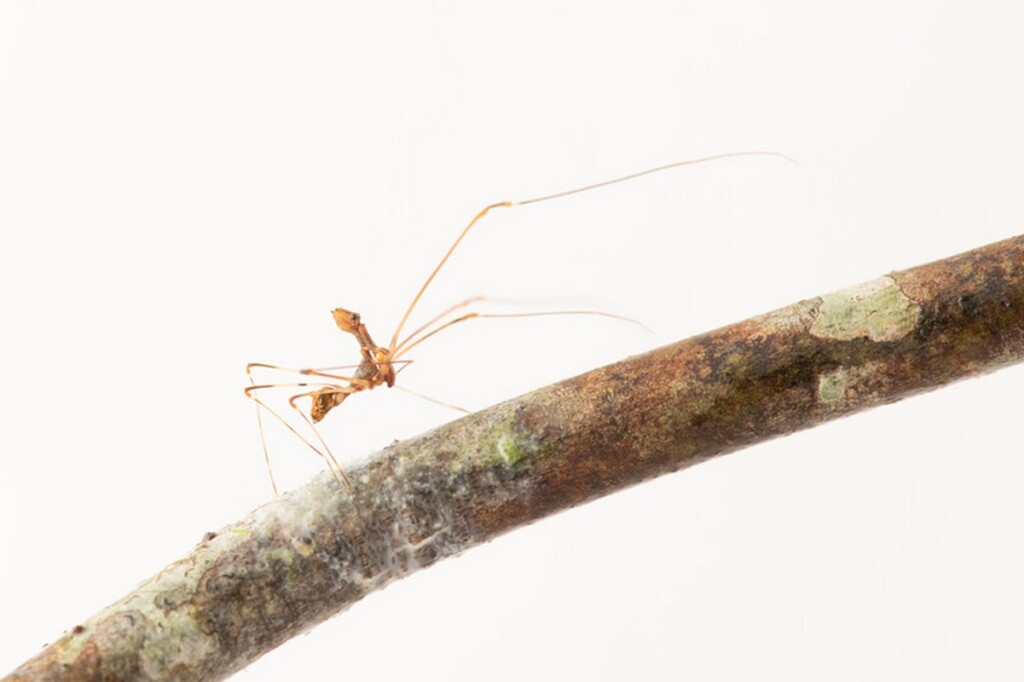
The expedition team also found a variety of spider species in Makira, including five jumping spiders that were lost to science and 17 spiders that are new to science. The longest-lost spider was the jumping spider Tomocyrba decollata, which had not had a documented sighting since 1900, when it was first described by science.
The most unexpected discovery was a new species of zebra spider. One evening a hanging egg sac in the entrance of a small cave caught the eye of one of the team members.
“I immediately recognized them as something special,” said Brogan Pett, director of the SpiDiverse working group at the Biodiversity Inventory for Conservation and doctoral candidate at the University of Exeter.
MADAGASCAR CONSERVATION: Reforestation is Difficult: But Local Farmers of NGO Green Again Madagascar Are on Top of It
“Pendulous egg sacs are one of the characteristics of the family of zebra spiders this new species belongs to. I crawled a short way inside the cave and saw a few adult spiders guarding egg sacs—they were quite large spiders and it was remarkable that they had gone unrecognized for so long.”
Although the expedition found nearly two dozen lost species, there were several that the expedition team was unable to find including the Masoala fork-marked lemur; a large chameleon, Calumma vatososa, meaning “beautiful stone” in Malagasy, and the recently rediscovered dusky tetraka. The lemur has not had a documented sighting since 2004 and the chameleon since 2006.
The dusky tetraka was rediscovered by the Search for Lost Birds in Madagascar in December 2022 and January 2023 in two different locations in Andapa and Masoala. Makira is between these sites, and ornithologists were hoping to determine if the species also lives there. They were unable to find any of the cryptic olive and yellow birds during the expedition, but they are not ready to rule out the forest as a habitat for the species yet.
MORE RESULTS FROM RE:WILD: Long-Beaked Creature Is Proven Not Extinct in First Ever Photos: ‘Blows My Mind’ After 60 Years
“The Makira Forest has the potential for two rare bird species, the dusky tetraka, and the Madagascar serpent eagle, but we were not able to find them this time,” said Lily Arison Rene de Roland, Madagascar program director for the Peregrine Fund, another organization that joined the expedition.
Madagascar has one of the highest rates of endemism of anywhere on planet Earth. For millions of years, plants and animals have evolved in seclusion—creating unique ecosystems that don’t exist anywhere else.
SHARE These Hidden Natural Wonders Of Evolution With Your Friends…




















